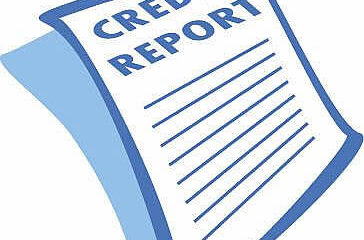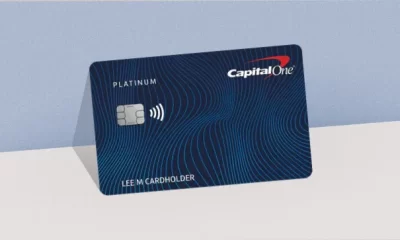Credit
How to Improve Your Credit Score with Credit Insights
If you’re looking to improve your credit score, Credit Insights can be a valuable tool to help you achieve your financial goals. Here’s a comprehensive guide on how to use Credit Insights to identify and address the issues that may be holding you back from achieving a higher credit score.
What is a Credit Score?
A credit score is a three-digit number that represents your creditworthiness. It’s based on an analysis of your credit history, including your payment history, credit utilization, length of credit history, and recent credit inquiries. Your credit score plays a crucial role in your ability to obtain credit, such as loans or credit cards, and the interest rates you’ll be offered.
A higher credit score signals to lenders that you’re a responsible borrower who is likely to repay your debts on time, making you a lower risk. On the other hand, a lower credit score indicates that you may be a higher risk borrower who might not make payments on time
Review Your Credit Report
Before you start improving your credit score, you need to know where you stand. Obtaining a copy of your credit report and reviewing it carefully is the first step in the process. You’re entitled to a free copy of your credit report from each of the major credit bureaus (Equifax, Experian, and TransUnion) once a year.
Once you obtain your credit report, review it carefully for errors or inaccuracies. Any errors on your credit report can negatively impact your credit score, so it’s important to dispute them right away. Credit Insights can help you identify errors and provide guidance on how to dispute them.
Make Timely Payments
Your payment history is one of the most significant factors that affect your credit score. Making timely payments on all your credit accounts, such as credit cards, loans, and utilities, can help you maintain a good credit score. Late payments can stay on your credit report for up to seven years and can significantly impact your credit score.
To help ensure that you don’t miss any payments, consider setting up automatic payments. This way, your payments will be made on time, and you won’t have to worry about missing a payment. If you do miss a payment, contact your creditor right away to make arrangements to catch up on the payment.
Reduce Your Credit Utilization
Credit utilization refers to the amount of credit you’re using compared to the total amount of credit available to you. High credit utilization can negatively impact your credit score. As a general rule, it’s recommended to keep your credit utilization below 30%.
To reduce your credit utilization, consider paying down your credit card balances or requesting a credit limit increase. Avoid closing credit cards, as this can increase your credit utilization ratio.
Apply for New Credit Cautiously
When you apply for new credit, such as a credit card or a loan, the creditor will perform a hard inquiry on your credit report. Hard inquiries can negatively impact your credit score and stay on your credit report for up to two years. Too many hard inquiries in a short period of time can signal to lenders that you’re a higher risk borrower, which can lead to higher interest rates.
Before applying for new credit, consider the impact it will have on your credit score. Credit Insights can help you estimate the impact of a hard inquiry on your credit score and provide guidance on how to minimize the impact.
Utilize Credit Monitoring Services
Credit monitoring services can help you keep track of your credit score and detect any suspicious activity on your credit report. These services can also alert you to any changes in your credit score or significant events, such as new credit inquiries or account openings.
When choosing a credit monitoring service, make sure to do your research and select a reputable company. Credit Insights provides a free credit monitoring service that can help you stay on top of any changes to your credit report.
Conclusion
Improving your credit score can seem daunting, but with the help of Credit Insights, you can identify and address the issues that may be holding you back. By reviewing your credit report, making timely payments, reducing your credit utilization, applying for new credit cautiously, and utilizing credit monitoring services, you can take control of your financial future and achieve a higher credit score.
Credit
Bouncing Back: A Guide to Understanding and Recovering from Sudden Credit Score Drops

Experiencing a sudden decline in your credit score can be both startling and disconcerting. The number that financial institutions use to judge your creditworthiness can fluctuate for a myriad of reasons, many of which might not be immediately apparent. However, understanding the underpinnings of credit scores and the steps that can be taken to recuperate lost points is crucial. In this comprehensive guide, we delve into the common culprits behind these unexpected drops and map out a clear route to credit score recovery, empowering you to regain control of your financial health.
Unveiling the Mystery: Why Did My Credit Score Drop?
Before we explore recovery tactics, let’s first examine the potential triggers of a sudden decrease in your credit score:
- Inaccuracies on your credit report: Sometimes, the fault may lie with errors on your credit report. It’s not uncommon for credit reports to contain mistakes, ranging from incorrect personal information to misreported account statuses. Regularly reviewing your credit reports from the three major credit bureaus is essential.
- Missed or late payments: Your payment history is the most influential factor for most credit scoring models. Even a single payment that’s 30 days late can significantly impact your score.
- Increase in credit utilization: An uptick in your credit card balances can raise your credit utilization ratio, which might lead to a score decrease. Experts often recommend keeping this ratio under 30%.
- Recently opened credit accounts: Opening several credit accounts in a short period can result in a minor score dip due to the hard inquiries and the average age of your credit accounts being lowered.
- Closing old credit accounts: Conversely, closing your oldest accounts can shorten your credit history length and potentially lower your score.
Strategies for Credit Score Revival
Once you’ve pinpointed the cause of your credit score drop, you can implement several strategies to nurse it back to health:
- Dispute Credit Report ErrorsMistakes on a credit report can be disputed by contacting the credit bureaus directly or through the assistance of a consumer financial protection bureau. Timely correction of these inaccuracies can help restore your score.
- Focus on Payment PunctualityEnsure that all your bills are paid on time. Setting up automatic payments or calendar reminders can be effective ways to avoid missing due dates. Consistent, timely payments will gradually improve your score.
- Reduce Outstanding BalancesWork towards lowering the balances on your credit cards and loans. The FICO score model views lower credit utilization ratios favorably. Crafting a budget that prioritizes debt reduction can be beneficial for your score.
- Be Strategic About Credit ApplicationsLimit the number of new credit applications you submit. Each application can result in a hard inquiry, which can slightly damage your score. If you must apply for credit, try to do so sparingly.
- Maintain a Mix of CreditHaving a variety of credit types—from credit cards to auto loans—can be positive for your score, but only if managed responsibly. This demonstrates your ability to handle different kinds of financial obligations.
Prevention: The Best Medicine
Prevention is better than cure, and this adage holds especially true when it comes to credit scores. To prevent future drops, maintain good financial habits, monitor your credit report regularly, and adjust your spending behaviors to align with your credit goals. With a proactive approach, a sudden credit score drop will be nothing more than a temporary setback on your journey to financial success.
Remember, credit score recovery is a marathon, not a sprint. It requires patience, discipline, and a clear understanding of the factors that influence your score. By following the guidelines outlined in this post and leveraging resources from reputable sources, you’ll be well on your way to bouncing back from a credit score dip and forging a path to a robust financial future.
Credit
From Decent to Excellent: Proven Strategies to Elevate Your 640 Credit Score and Unlock Financial Freedom

A 640 credit score is seen as the gateway to fair credit territory—a launchpad for individuals striving to turn their financial narrative from good to great. While this score is certainly not the bottom of the credit spectrum, it doesn’t offer the benefits that higher scores provide. By employing strategic measures to improve your credit score, you are not just brushing up a number; you’re opening a world of financial opportunities that can lead to more favorable loan terms, lower interest rates, and a sense of security. In this post, we’ll explore actionable tips to help you elevate your credit score from decent to excellent, setting the stage for financial freedom and success.
Understanding the Importance of Your Credit Score
Your credit score is a critical financial parameter that lenders use to evaluate your creditworthiness. A 640 score signals to creditors that you’re on the cusp of transitioning to a higher credit tier. By enhancing your score, you can access better financial products and services, which can significantly impact your life. Let’s take a closer look at how you can make this transition.
Review Your Credit Reports Regularly
Errors on credit reports can drag down your score. It’s essential to check your credit reports from all three major credit bureaus—Equifax, Experian, and TransUnion—regularly and dispute any inaccuracies you find. This seemingly small step can have a big impact on your credit score.
Reduce Your Credit Utilization Ratio
High credit utilization can significantly lower your score. Financial experts recommend keeping your credit utilization ratio below 30%. This means if you have a credit limit of $10,000 across all cards, you should strive to owe less than $3,000 at any given time.
Strategic Actions to Boost Your Score
Elevating your credit score requires a combination of tactics and sustained effort. The following strategies are designed to help you responsibly manage credit and showcase your reliability to lenders:
- Pay Your Bills on Time: Your payment history is the single most significant factor affecting your credit score. Set up reminders or automate your payments to ensure that you never miss a due date.
- Avoid Taking on More Debt: While it might be tempting to open a new credit account to improve your credit mix, it’s essential to avoid incurring more debt until your score has improved.
- Increase Your Credit Limits: If you have a good payment history, you may be able to negotiate higher credit limits on your existing accounts, which can help lower your overall credit utilization.
Consider a Mix of Credit
Having different types of credit—such as credit cards, retail accounts, installment loans, finance company accounts, and mortgage loans—can benefit your score. However, it’s not wise to take out a loan you don’t need just to improve your credit mix.
Become an Authorized User
Becoming an authorized user on a family member or friend’s credit card can be a quick way to boost your score, as long as the primary cardholder has a strong payment history and keeps low balances.
Maintaining and Monitoring Your Progress
Improving your credit score is an ongoing process. You must be diligent about maintaining good credit habits and monitoring your credit score regularly. Patience is key—the results of your efforts will materialize over time as your credit history grows and your score begins to reflect your creditworthiness accurately. Embrace the journey towards financial freedom with confidence, knowing that each step you take is a move towards better financial opportunities.
By following the strategies outlined in this post and making informed decisions, you can transform a 640 credit score into a stellar financial reputation. Remember, each positive action contributes to a brighter financial future. Start today, and watch your credit score—and your financial opportunities—soar.
Credit
Is the The U.S. Bank Altitude® Connect Visa Signature® Card Hard to Get? What Are the Benefits?
The U.S. Bank Altitude® Connect Visa Signature® Card is a compelling option for those who travel frequently or spend a lot on gas. It offers a range of benefits and rewards that cater to various spending habits, especially in categories like travel, gas stations, and streaming services.
One of the standout features of this card is its reward structure. It offers 5X points on prepaid hotels and car rentals booked directly in the Altitude Rewards Center. Additionally, cardholders earn 4X points on travel at gas stations and EV charging stations, making it an excellent choice for road trips. For everyday spending, the card provides 2X points at grocery stores, grocery delivery, dining, and on eligible streaming services, with 1X point on all other eligible purchases.
The card also comes with a lucrative sign-up bonus. New cardholders can earn 50,000 bonus points after spending $2,000 within the first 120 days of account opening. This bonus is equivalent to a $500 value redeemable towards travel, gift cards, cash back, merchandise, and more. Notably, points earned on the Altitude Connect Card do not expire, adding to its long-term value.
Other significant benefits include a $30 credit for annual streaming service purchases like Netflix, Hulu, Spotify®, and Apple Music. Additionally, the card offers up to $100 in statement credits for TSA PreCheck® or Global Entry® application fees every four years. For frequent flyers, the complimentary Priority Pass™ Select membership provides access to over 1,300 VIP airport lounges worldwide, enhancing the travel experience.
The U.S. Bank Altitude® Connect Visa Signature® Card is generally targeted towards individuals with good to excellent credit scores. This implies that applicants should have a well-established credit history and a high credit score to increase their chances of approval. The card has an annual fee of $95 after the first year, which is waived initially. However, it does not have foreign transaction fees, making it more appealing for international purchases.
In terms of APR, the card has a variable APR ranging from 21.24% to 29.24%. Like most credit cards, it’s important to consider this aspect, especially if you plan to carry a balance on the card. The card also offers a Pay over Time feature with U.S. Bank ExtendPay™ Plan, allowing cardholders to split eligible purchases into equal monthly payments.
Overall, the U.S. Bank Altitude® Connect Visa Signature® Card is a strong contender in the category of travel and gas rewards credit cards. Its combination of high reward rates, travel perks, and streaming service credits make it a valuable card for those who spend heavily in these areas. However, potential applicants should weigh the annual fee and credit requirements against the benefits to determine if it aligns with their financial habits and goals.
-

 Credit1 year ago
Credit1 year ago7 Tips for Managing Your Finances in Your 20s
-

 Family1 year ago
Family1 year agoThe Importance of Saving Money on Baby Products
-

 Business1 year ago
Business1 year agoHow To Check Your Business Credit Score
-
Credit1 year ago
Best Cash Back Credit Cards of 2023: The Ultimate Guide
-

 Credit1 year ago
Credit1 year agoBetter Cash Installment Loan Offer Review
-

 Credit1 year ago
Credit1 year agoWhat Is The Impact of Student Loan Debt on Your Credit Score?
-

 Credit1 year ago
Credit1 year agoUnlocking Potential: The Capital One Credit Increase Hack
-
Credit1 year ago
CashUSA vs. Other Short-term Loan Providers: Which is Best?
